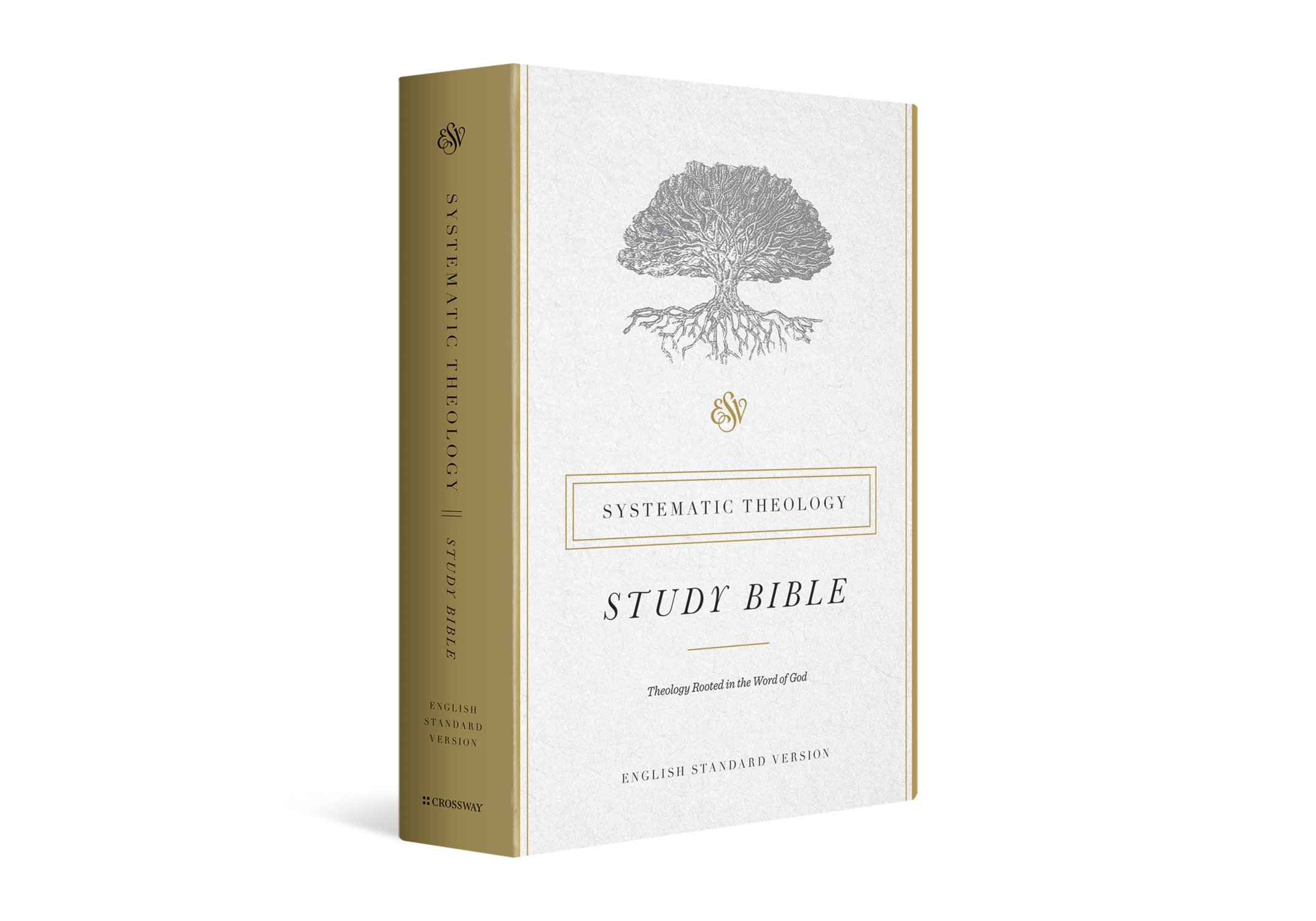Today we are reviewing the ESV Systematic Theology Study bible put out by crossway. I have broken this review into sections so that readers can look for the information they want quickly. See the video below for a more personal look.
Translation:
The ESV bible is a formal equivalent translation, which means that it seeks to be more word for word in relation to the original languages. While the ESV is formal, I have found it to be far more readable than the “competing” formal translation of the NASB (New American Standard Bible). In terms of readability and translation, ESV has consistently remained my go to.
The textual basis of the ESV is what you would expect in a modern translation. For the Greek text, the Nestle-Aland 28th, and United Bible Societies 5thedition. For the Hebrew text the ESV uses the Biblia Hebracia Struttgartensia, 5thedition.
Physical appearance and feel:
For this particular bible, I have both the hardcover and the genuine leather editions. Initially, I had negative impressions until I used them more and the reason why is simply because of the paper quality. This is one aspect about these bibles (or bibles in general) that I don’t like and I’m not sure why bibles still this type of paper. The paper reminds me of that which you would find in a phone book and to be honest, I wish bibles used thicker paper like the Tolle Lege press 1599 Geneva Bible. Not only does the thinner paper make the ghosting worse (though the ghosting in this bible isn’t too bad), but the easy wrinkling of the pages and feeling like you could rip a page is off putting. While I have said that, I quickly got over this issue because, firstly, it seems to be an issue with most every bible and secondly, because this bible quickly became one that I thoroughly enjoyed. When speaking to the thinner paper, there is something about the genuine leather edition that made the paper seem more solid than the hardcover and so I found myself being more comfortable using the genuine leather in that regard.
For the hardcover, the graphic and print is on the front cover of the book, which made me happy as I do not like book jackets nor books that lose their look when you take off the jacket. For the leather bible, it feels nice and I enjoy using it very much, though, as you could expect this isn’t the same caliber of leather as editions such as the goatskin. This doesn’t necessarily make it bad though as I felt more comfortable taking this bible out and about, which is actually a significant positive. Wrapping up the physical attributes of these bibles, I have to point out that firstly, the size of this study bible is just perfect. While it is obviously a little bigger than my thin-line, it is not big enough to be annoyed with. You can take this bible anywhere and be comfortable with it. This is a major plus for me whenever it comes to bibles. A negative aspect is that the genuine leather edition comes with only one ribbon while the hardcover doesn’t have any ribbons. While ribbons are easy to add to your bibles, I would hope for minimally two in the genuine leather edition and one in the hardcover right out of the packaging.
Additional Features:
This ESV includes a concordance as well as a “canonical index of sidebars”, which is an index of “mini articles” you can find throughout the bible (that will be explained in a second). Unfortunately, this ESV does not include maps, but I digress. Within this bible you will find book introductions, which briefly discusses the author and date of that particular book while also outlining the content of the that particular book. There is also a theological outline of each book. So, at the beginning of Genesis, for example, you have the information of “Author and Date”, “Audience”, “The theological message of Genesis”, and a brief outline of the book. The theological message outline is easily the highlight of the book overview.
From here you find “sidebars” which looks to various themes found in the scripture, namely, Attributes of God, revelation, mankind, sin, Jesus Christ, salvation, the Holy Spirit, church life, the Christian life, and the end times. An example of this is found in Genesis 1:26-31 with the category “Mankind” and the subject is “The Image of God”. On the side of each sidebar is a cross reference to other “sidebars” and as I mentioned there is an index of these sidebars. As I read through these sidebars I found them to be more general to the point where a Baptist and a Presbyterian could read these notes and both be happy with them, meaning that secondary issues are treated well. While the book has a stance on things such as predestination, it does mention that there are other views in the articles on the subject. Before touching on the articles, I want to just say that as I read these sidebars I fell in love with the bible. In many ways the sidebars act as a theological devotional as you’re doing your bible reading. Just as well, this is something I’ve been wanting for a long time, where you’re reading through a text and you have a systematic type devotional to go along with it. Not only that, but sidebars don’t take away from the biblical text. What I mean is that it is easy to get distracted by commentary that speaks verse by verse, so much so that sometimes you read the commentary before the biblical text (I have even known individuals who read the commentary and just skim the biblical text!). In this book, because it is not verse by verse, but thematic according to systematic theology, that isn’t as much of an issue or at least not in the same way. While there were times where I looked to the sidebar first (sometimes for the sake of this review), it didn’t affect my reading of the text per se in that it was a systematic application of the text.
Another feature of this bible are the articles from a variety of contributors ranging from Stephen Wellum, Michael Kruger, Fred Sanders, etc. As I read through all the articles, I thought they did a great job at summarizing a great deal of information for the most part while at times I thought more clarification or expansion would be better. I thought there were many important topics in the text while a couple of articles made me think “eh…I wouldn’t have said it that way” or “I would have clarified here”. One example of that is in Gregg Allision’s “Theological Traditions within Christendom” article in that he gives an overview of protestant, Roman Catholic, and Eastern Orthodox positions, and the article almost (emphasis) seems to leave them all as valid options. To add a positive light, the articles such as Orthodoxy and Heresy by Robert Letham were fantastic and much needed. One thing you’ll notice is that I know who the authors of the articles are, but that is actually one of the nitpicky negatives of this bible, that is, to find the author of the article you have to go to the front of the bible to the contributor’s page as they don’t list the authors on the articles themselves, which bothered me a little bit.
Conclusion:
To wrap up my review, I’ll say this. I really am enjoying this bible. The theological devotional aspect alone makes it worth the purchase, but it is also a decent primer into systematic theology as you read through the text. I think that the devotional aspect makes it good for the “seasoned” readers in that it is a devotional refresher and that the systematic aspect makes it brilliant for those who are new to the faith. This said, I would genuinely recommend this bible. Given its size and the content, it could easily replace your thin line as your primary bible and it is especially good as a gift to a family member or friend. For the leather edition, I enjoy it a lot and I think it could be a solid investment for a long-term bible that doesn’t break the bank.
See the video below for a more personal look.
Links:
Note the amazon link is an affiliate links meaning that I receive a small commission when these books are purchased through these links.



No responses yet